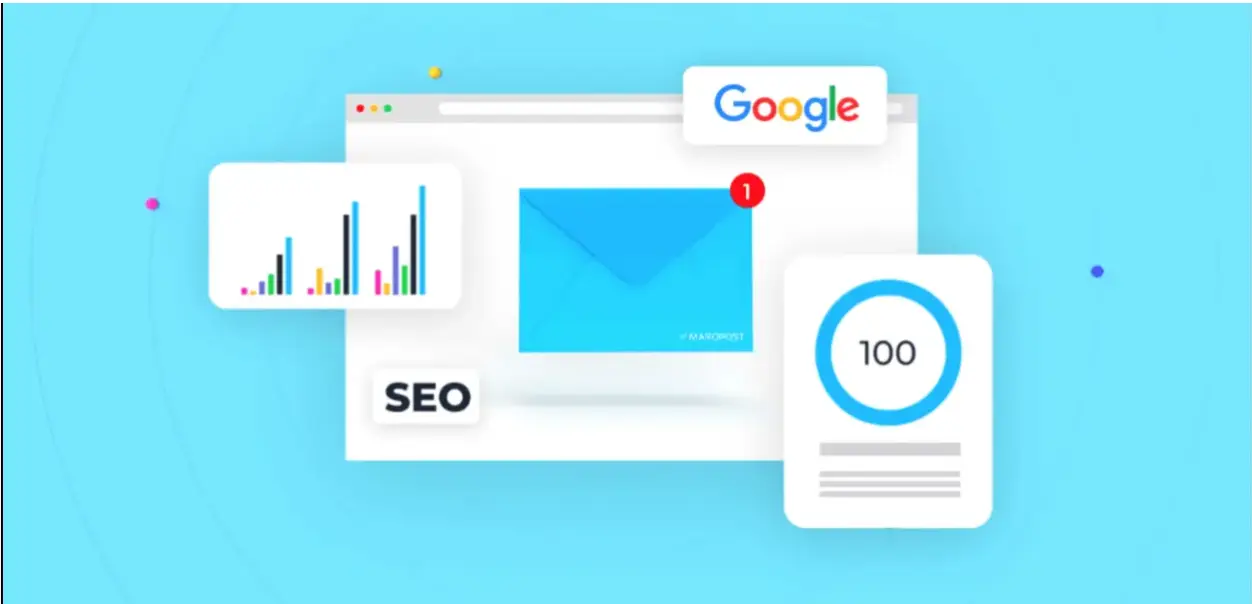You've done the SEO for your site, but have you used SEO principles for your emails? SEO email marketing may not be the first thing that comes to mind. Still, it's a nifty strategy that will allow you to improve your approach to email marketing, and ensure your content reaches your target audience.
How Does SEO Relate To Email Marketing?
Search Engine Optimization is the process of increasing and improving unpaid traffic quality to a website from search engines. By doing keyword research and applying other strategies you can rank higher on the search engine's results page and increase your site's visibility and traffic.
SEO helps improve the content and make the website easy to navigate, which is very important for a smooth user experience, especially for those new to your page. In contrast, email marketing is an effective, low-cost way of engaging users who are already interested in your site's content.
Email marketing and SEO are two different marketing channels but they can help each other. Smart SEO specialists can use emails to profit from their search engine optimization campaigns; and vice versa.
How Email Marketing Benefits From SEO
Email marketing doesn't determine a site's rank in search engines. Its main purpose is to improve click-through rate and reduce bounce. Emails provide you with an opportunity to get traffic to your website. After all, there are 4 billion active email users every day. By optimizing this strategy, you can generate leads and create loyal customers.
Your email marketing strategy will benefit from SEO by applying the data you’ve gathered from your SEO to your email strategy, you'll see better results with your email content. Emails can be optimized with SEO, and SEO can improve with the right email marketing strategy.
Tracking the analytics of your emails to improve them along with other SEO tricks will allow you to personalize your emails and catch the buyer's attention. How? Keep reading to find out!
5 SEO Tips To Optimize Email Marketing
Here are the things you should consider adding to your email strategy:
Keyword Usage for Content
- Keyword Research:
If you know what keywords your users are searching for, use them to generate ideas for content! Use the results of your keyword research to create content your users are searching for. This way you can send emails that interest them and raise your engagement metrics.
- Long-tail keywords:
If someone searches for “cars” on Google’s search engine this is what they’ll see:

If you are looking to buy a car you would probably use a longer search query or a question (long-tail keyword). This allows you to get results that are closer to your intent.
Here is what you see if you search for “where to buy used cars in Toronto under $3,000”

You reduce the results from 7.5 billion to 31 million, which is precisely what the searcher needs. Use long-tail keywords in emails for those users who need to find your specific information on a search engine.
- Keywords with Rising Popularity:
You can use SEO tools to track keywords and find new keyword opportunities. For example, SE Ranking SEO keywords tool provides you with a list of keywords (including long-tail terms) along with all the needed metrics, including search volume. You can use this tool to discover what trends to hop on by searching the volume dynamics of keywords over the past 12 months.
Using SEO Best Practices
When creating your HTML email templates, you need to optimize your headlines, subject lines, etc., just as you do with your website content.
- Headlines and Titles: These guide the reader through structured information by playing with fonts and sizes to highlight important sections.
- Subheadings: It’s important to use these correctly (H1, H2, H3) since they make your text more accessible to email readers.
- Subject lines and body copy: Test keywords here to optimize them according to the emails your audience interacts with the most. Keep the subject line short, catchy, and straightforward. Always place the keywords at the beginning, especially in the body copy, since you can only preview the first line before reading on.
Email marketing aims to redirect email users to your website via links, yet many people need a bit more convincing before opening a new window. A great tool is to use anchor links with your targeted keywords. An anchor link is a hyperlink that takes you to a different part of the email rather than opening another window. It’s great for long newsletters.
E-Newsletter Archives
Email marketing often doesn't reach people at the ideal moment, and they may have to search for something later. Post all of the blog posts or articles you send in email newsletters to your website. Besides, search engines can't crawl emails, so publishing your email content can increase your brand's visibility in Google search results.
Post newsletters on your site and invite people to subscribe to receive exclusive content and grow that mailing list! Archiving this content reduces subscriber loss because they'll know the kind of emails they’ll receive.
Moreover, develop an extensive email list and segment the users according to their funnel stage.
Published newsletters on your website obviously need to have their own SEO applied to them. Include key phrases and keywords for the topic each newsletter covers. Optimize the title of each newsletter using the most prominent keywords.
Website Search Bar to the Email Newsletters
A search bar is a simple yet helpful tool when browsing any platform. If you have numerous articles and newsletters to browse through, adding a search bar is great for your users to find the information they are looking for more easily.
Using HTML code, you can create a great variety of search bars, from simple ones to others with more elaborate designs. As long as you offer this basic search tool, you’ll see an improvement.
Video Content
Video is an ever-growing content strategy that, when done right, captures users' attention, helps them retain more information, and adds to the time spent on your site. According to HubSpot, 54% of consumers want to see more video content from businesses they support. Plus, the Google algorithm favors video content as well!
Remember, 85% of marketers say that video is an effective way to get attention online, and 86% of marketers claim video has helped them increase traffic to their website.
Add relevant video content to any emails in which you want to increase conversions. But as always, when doing so, keep a few SEO rules in mind:
- Thumbnail: Use a well-designed image that will intrigue and motivate users to click through. Animated thumbnails are also becoming very popular.
- Title: This should properly summarize the key theme of the video. Use keywords and keep it interesting and short.
- Description: Here, you should take advantage of the space and add as many keywords as possible while also giving a more in-depth explanation of the information shared in the video.
The Bottom Line
Email marketing SEO is a low-cost way to engage with customers during any part of the sales funnel. A carefully curated email strategy can boost your website's CTR, improve bounce rate, increase engagement and offer value to your clients. So why not apply the SEO tactics you've been using on your site to your emails?



